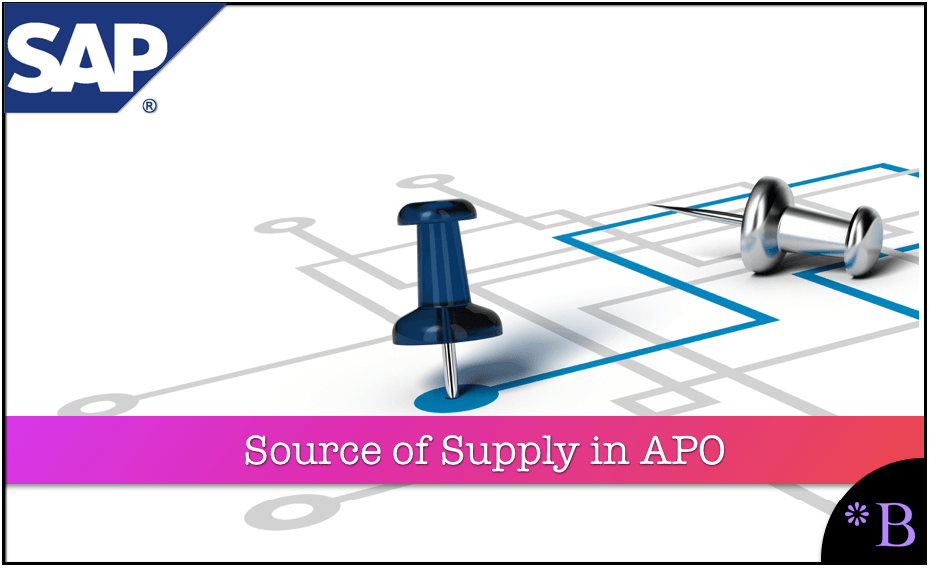How to Understand Source of Supply in APO
Executive Summary
- There is a hierarchy of a source of supply for SNP heuristics and CTM.
- The SNP optimizer supposedly enables multisourcing.
- One of the concepts is that one can constrain the source of supply.

Introduction to Sources of Supply in APO
This article will cover how APO can set up the logic for choosing from multiple sources to supply the network.
Our References for This Article
If you want to see our references for this article and other related Brightwork articles, see this link.
Notice of Lack of Financial Bias: We have no financial ties to SAP or any other entity mentioned in this article.
- This is published by a research entity, not some lowbrow entity that is part of the SAP ecosystem.
- Second, no one paid for this article to be written, and it is not pretending to inform you while being rigged to sell you software or consulting services. Unlike nearly every other article you will find from Google on this topic, it has had no input from any company's marketing or sales department. As you are reading this article, consider how rare this is. The vast majority of information on the Internet on SAP is provided by SAP, which is filled with false claims and sleazy consulting companies and SAP consultants who will tell any lie for personal benefit. Furthermore, SAP pays off all IT analysts -- who have the same concern for accuracy as SAP. Not one of these entities will disclose their pro-SAP financial bias to their readers.
Where Source of Supply Applies
Source of supply applies to the following modules in SAP APO:
- SNP
- CTM
- PPDS
APO defines different sources of supply which can be selected automatically or in interactive planning. Inherent to his process is a method of prioritizing the different sources. A quotation is a method of setting a static source of supply.
Quota arrangements are often based upon procurement agreements that rely upon a certain amount of volume to qualify for price discounts, as you can see in this article.
The Hierarchy of Source of Supply for The SNP Heuristic and CTM
Implementing quotas in SCM is a way to ensure that planning is in concert with the business arrangements that the company has made with its suppliers. The source of supply determination can be seen as a hierarchy. At the top of the hierarchy are the quota arrangements. After the quota arrangements, the following mechanisms are used to perform the selection:
- Procurement Priority: (sources of supply can be coded with priorities; they take over if no quota is set)
- Costs: (When priorities are identical, the low-cost source will be selected over the higher cost source)
- Procurement Type: (Here, in-house production is given precedence over procurement – if the same item can be either bought or made)
The SNP Optimizer and Sources of Supply
In previous versions, the SNP optimizer did not respect these quotas and external procurement relationships; however, in later releases, it can. Read more about the interaction between the optimizer and sources of supply here. However, it greatly depends upon “how much” quota arrangements are to be used. The more pre-existing agreements must be used, the less sense it makes sense to use the optimizer.
- Quota arrangements and external procurement relationships are the required procurement constraints in some industries.
- The logic is that better prices and quality can be obtained by signing these long-term agreements.
Solution by Industry
This is true for some industries. A more marketplace selection approach is enabled with the SNP optimizer, making decisions based upon costs (although it can now respect quota arrangements). However, a cost-based approach works better for procurement situations that are not subject to significant scale economies and where the quality is relatively standardized. The items are more like commodities. This would include industries such as petrochemical and agricultural post-processing.
The Source of supply is of particular importance for the CTP function. This is a connection between GATP and PPDS. This results in an allocation of production capacity to future orders.
Constraining Supply with Source of Supply?
How is supplier capacity modeled? The most straightforward method was described in the book Supply Chain Planning in SAP APO. See the excerpt below.
“In some cases the procurement quantity of a supplier is limited – by capacity of by the volume of the contract. The restriction night apply to a single product or how a set of products. this kind of capacity restriction is modeled in SAP APO™ using a transport resource for the capacity and the capacity consumption in the ‘product specific means of transport’s-view of the transportation lane as resource load. he advantage of using transport resources to production resources at the supplier for the modeling of the supplier capacity is – besides avoiding additional master data – that the quantities are available at any time within le bucket, so that the complete amount can be ordered at the beginning of he period, whereas in a modeling with the production resources quantity is only available at the end of the period.”